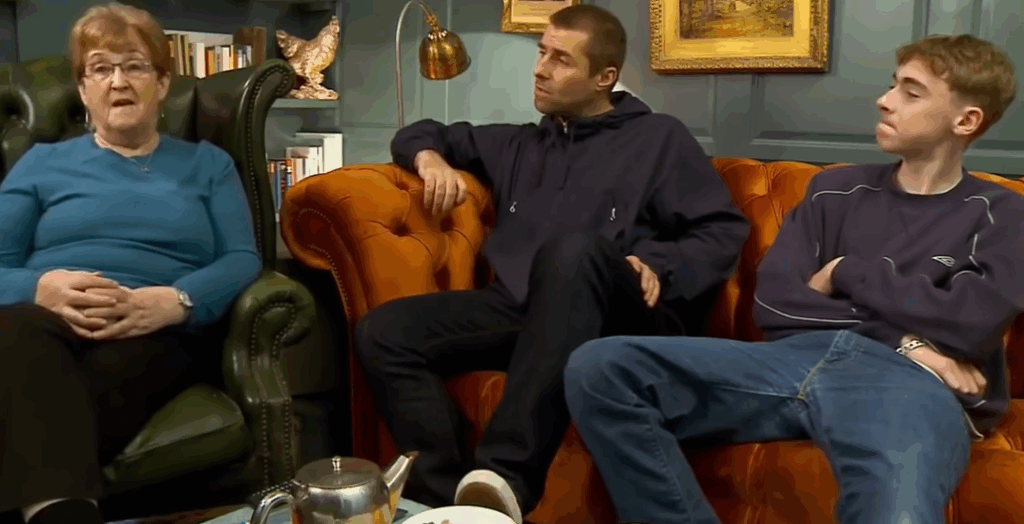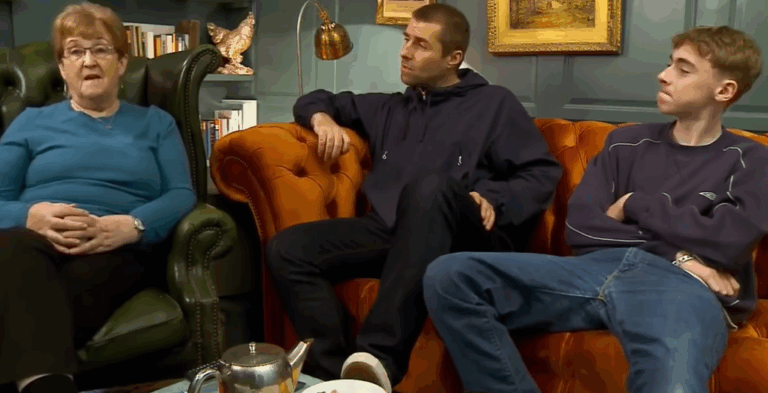Seldom does Gemma Gallagher’s name appear in family group photos, on stage, or in interviews. However, her presence severely damages the legacy of one of the most recognizable voices in rock. She is the youngest of Liam Gallagher’s four children, born in January 2013, and the unintended result of his brief liaison with New York journalist Liza Ghorbani. From the beginning, her story has been told through courtroom transcripts and financial disclosures rather than happy announcements.
Gemma’s role in Liam’s story has been remarkably ambiguous over the last ten years. Despite the fact that paternity has been legally established, the two have never been seen together in a public photo or at a meeting. Millions of people around the world have heard her father’s voice, but it has remained silent about her. Given Liam’s previously well-publicized reconciliation with his eldest daughter Molly, whom he embraced after two decades apart, this lack of recognition feels especially startling. That reunion, which was particularly poignant and widely publicized, contrasts sharply with Gemma’s absence.
Her mother requested a substantial increase in support—£86,000 more per year—during recent proceedings in the Supreme Court of New York to help with the growing expenses of Gemma’s needs, including her care for autism. A flurry of commentary was sparked by that request, which was placed alongside the enormous financial gains from the impending Oasis reunion tour. Supporters noted that a neurodivergent child needs significantly more resources than a traditional co-parenting arrangement can provide, particularly when one parent is still distant, while critics accused Ghorbani of opportunism.
Table: Gemma Gallagher – Basic Profile and Public Information
| Detail | Information |
|---|---|
| Full Name | Gemma Gallagher |
| Date of Birth | January 2013 |
| Age (as of 2025) | 12 years old |
| Father | Liam Gallagher (Singer, Oasis frontman) |
| Mother | Liza Ghorbani (Journalist) |
| Siblings | Lennon, Gene, Molly (half-siblings) |
| Known Medical Condition | Autism (diagnosed during early childhood) |
| Public Appearances | Limited – seen during court visits with mother in New York |
| Legal Disputes | Ongoing child support claims and legal battles involving both parents |
| Reference Link | https://www.dailymail.co.uk/article-14503367/Liam-Gallagher-Daughter-Gemma.html |

Liam publicly reacted by using his own platform to post Beatles lyrics and denounce the claimants as “gold diggers.” These posts might unintentionally cost him more, even though they were probably meant as a show of defiance. Such online remarks, according to legal experts, might result in a punitive ruling—a sort of “a**hole tax”—increasing his yearly obligation to almost £386,000.
From a human point of view, the controversy is about more than just money. It highlights a growing understanding of how public figures’ children frequently live in emotional bubbles, influenced by choices that are well outside of their control. The children—sometimes loved, sometimes shunned—live in a parallel universe, influenced by their parents’ celebrity but not welcomed by it, while fans concentrate on album releases or sold-out tours.
The complexity is further compounded by Gemma’s autism. Her needs, which were identified in early childhood, call for emotional stability, specialized care, and constant attention. These are necessities rather than extravagances. The disparity is made painfully clear when considering a single-parent household without the significant involvement of a father with millions of dollars. Former New York Times writer Liza Ghorbani now juggles the expense of medical care, legal fees, and the emotional toll of parenting a child whose story was never intended to make headlines.
Liam’s other children, Gene, Lennon, and Molly, on the other hand, have been openly welcomed, honored, and occasionally included in creative endeavors. Molly now has a strong relationship with her father and half-siblings, and she even goes to events with Liam and his fiancée. Both Lennon and Gene, who are creating their own identities in the fields of music and fashion, proudly and humorously make reference to their Gallagher ancestry. But for Gemma, that last name means little more than court documents and online discussion.
In a time when celebrity children are frequently paraded for brand-building or public relations purposes, this imbalance is especially poignant. Before they turn sixteen, many of them start Instagram careers, go to premieres, or walk the runways. However, Gemma is still firmly outside of that realm; she is only known from reports, which are frequently anonymous, and rarely from her own words. Her avoidance of public appearances may be protective, but it also serves as a reminder of how celebrities can ignore people who don’t fit the narrative.
Gemma’s story has subtly reappeared in the wake of online discussions concerning Gallagher family unity and Oasis fans getting ready for the band’s comeback. The irony is obvious: one of the youngest members of the Gallagher family is still legally recognized but emotionally excluded, while the brothers finally put an end to their long-running feud and come together for a nostalgic tour that is predicted to bring in millions of dollars.
The fact that Molly, who was once estranged from Liam herself, pushed for this reunion is especially powerful. She has talked about the value of relationships and the therapeutic benefits of just being noticed. The question of whether Gemma will ever have the same opportunity is given unexpected depth by that realization, which was gained via distance and reconciliation.
It’s easy to lose sight of the fact that beneath the headlines, the celebrity, and the money, there is a young girl growing up in extremely unusual circumstances. Instead of bedtime stories or holiday dinners, she is learning about her father from articles and album covers as she grows up. Furthermore, if someone chooses to cross it, fame can act as a bridge even though it can also create obstacles.
By publicly recognizing her, even in a modest way, Liam could significantly enhance both Gemma’s and his own stories. His image as a distant father was transformed into a redemptive father figure upon reestablishing contact with Molly. It would take a different kind of courage to decide to meet Gemma, even in private, a quieter, more vulnerable kind, the kind that garners respect rather than praise.


